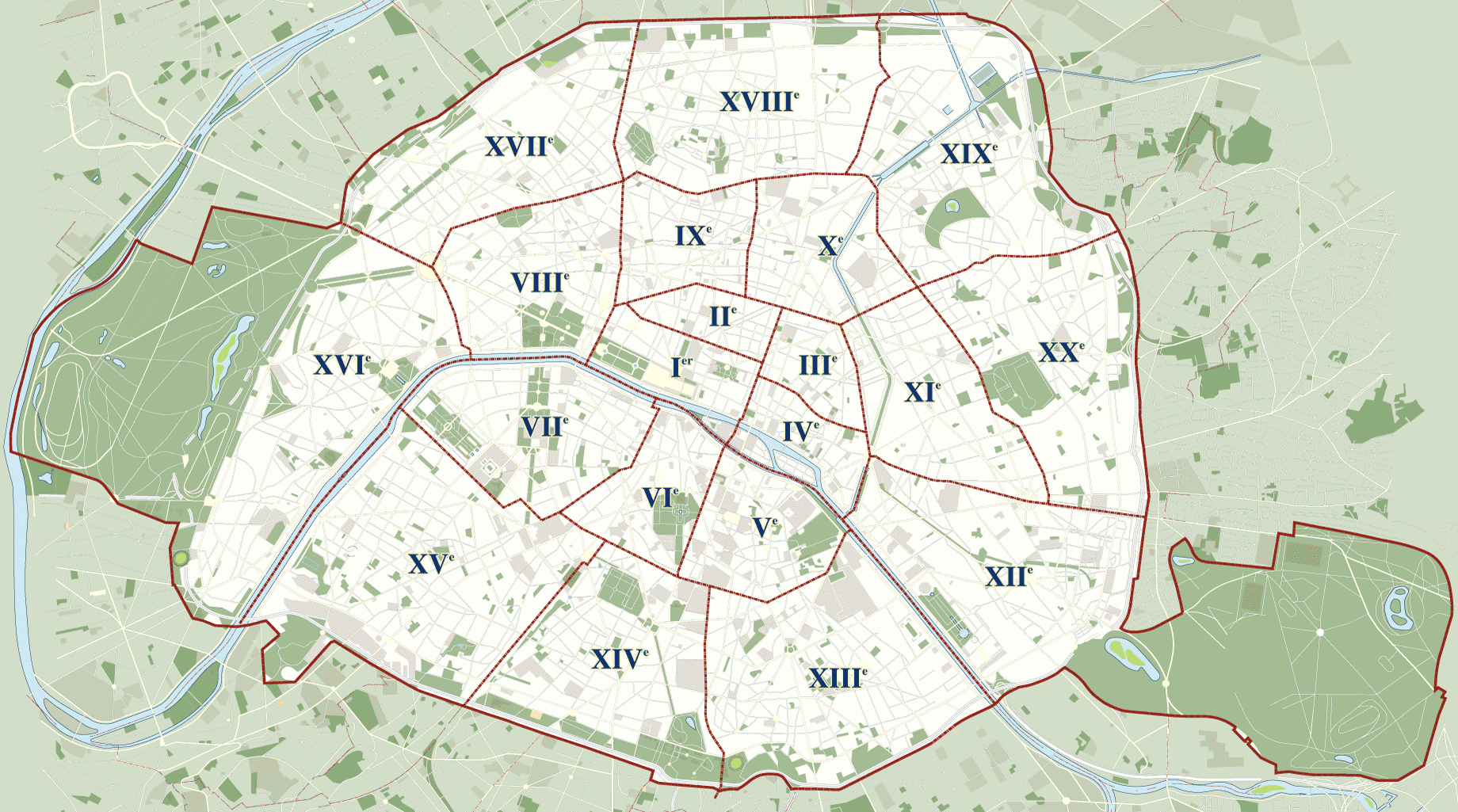A guide to Paris' arrondissements
Posted by Josh on 20th Oct 2025 in the blog in the travel & tourism category
When it comes to talking about locations in France, the country is divided into a number of administrative designations that don't have an exact equivalent in English. There's the department for example, which is something between a region and a commune; while communes can be considered as kind of township or parish.
France's largest cities - Paris, Lyons and Marseilles - also have their own administrative districts known as arrondissements. Lyons has nine, and Marseilles has sixteen, but Paris, being France’s largest city and the capital, has twenty.
What are arrondissements?
Arrondissements are the different administrative areas which make up the cities of Paris, Lyons and Marseilles. Each arrondissement has its own municipal council, as well as its own town hall and mayor - although each of these cities also has a mayor at the city level, too.
Many services are administrated at the arrondissement level, from schools and housing support to wedding and funeral registrations.
The arrondissements don't have names. Instead they are simply known by a number. In Paris, the arrondissements stretch from 1 to 20 in a spiral shape emanating from the centre - hence the name 'escargot', by which the French affectionately refer to the collective group of Paris' arrondissements. Each arrondissement has its own distinctive culture and reputation, from the 11th's world-renowned nightlife to the comparative tranquility of the 15th with its beautiful park and family spaces. Parisians often feel a sense of real attachment to the arrondissement they live in.
In Paris, Lyons and Marseilles, the last two digits of post codes refer to the arrondissement where an address is situated. The address for the Eiffel Tower, for example, is Av. Gustave Eiffel, 75007, as it can be found in Paris' seventh arrondissement. Throughout the rest of France, on the other hand, the final three digits of post codes are references to the local post office or commune.
"Plan of Paris and its 20 arrondissements" by J.M. Schomburg via Wikimedia Commons, licensed under CC BY‑SA 3.0.
What is the history of Paris' arrondissements?
In the wake of the French Revolution, the administrative geography of France was reorganised to reflect the prevailing spirit of egalitarianism and scientific methodology. Hence the country was divided into dozens of roughly equal departments, and hence Paris was divided into roughly equal arrondissements, in contrast to the complex system of parishes, quartiers and seigneuries which had constituted the French capital in the feudal age. This is also when the metric system was introduced.
Arrondissements were considered the most effective way to organise a rapidly growing urban population and to simplify local governance. They were introduced for Paris in 1795 (Lyons would not be divided into arrondissements until 1852, and Marseilles until 1946, when the post-war period saw a boom in urban growth and reconstruction).
To begin with, there were only twelve arrondissements in Paris. Back then, the city was much smaller than it is now, with a population of around half a million, compared with the more than two million people who live in the French capital today. It was not until 1860 that these original twelve arrondissements would be redrawn and another eight arrondissements would be added, under the urban reforms of Georges-Eugène Haussmann. Under Haussmann's guidance, many of the suburbs surrounding Paris were incorporated into the administrative embrace of the city, meaning that the population of Paris effectively doubled - hence the need for new arrondissements.
Where major Paris landmarks are located in each arrondissement
| 1st | Musée du Louvre, Tuileries |
| 2nd | Galerie Vivienne |
| 3rd | Musée Carnavalet, Musée Picasso |
| 4th | Hôtel de Ville and Centre Pompidou |
| 5th | Sorbonne, the Pantheon |
| 6th | Jardin du Luxembourg |
| 7th | Eiffel Tower, Invalides |
| 8th | Place de la Concorde, Champs-Élysées, Arc de Triomphe |
| 9th | Palais Garnier |
| 10th | Canal Saint-Martin |
| 11th | Place de la République |
| 12th | Coulée verte |
| 13th | Bibliothèque François Mitterrand, Asian Quarter |
| 14th | Paris catacombs |
| 15th | Parc André Citroën |
| 16th | Musée Marmottan, Bois de Boulogne |
| 17th | Batignolles quartier |
| 18th | Montmartre, Sacré-Cœur |
| 19th | Parc des Buttes-Chaumont, Parc de la Villette |
| 20th | Belleville, Père Lachaise Cemetery |
Check out some of our other blog posts!
31 French adjectives to use instead of 'très'
Posted on by Josh in the categoryExpand your vocabulary with these colourful descriptors
Read moreWhich languages are spoken in France (besides French)?
Posted on by Josh in the french culture categoryIt's more than just French
Read moreHave fun learning French Today
People from all over the world enjoy learning French with Alexa Polidoro’s popular French audio and video lessons.




